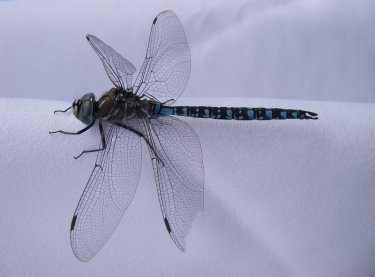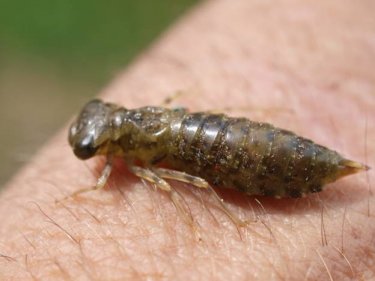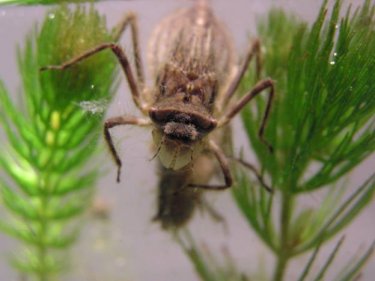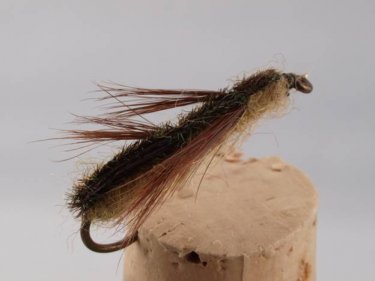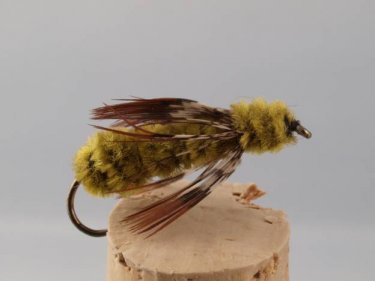The first article describing dragon flies.
Part 1 “The Dragonfly”
Bugs, this is my favorite subject. I LOVE talking about bugs as they pertain to FlyFishing. I have found; over the many years of FlyFishing that this is the most important thing to learn by far. Most people have this misconception that FlyFishing is all about the ability to cast well, I disagree, and here is an example of why I say this;
If John can cast 100' and does not know much about the insects and When/Where/Why the fish target them, he will have moderate success.
Dave can only cast 50', but he has done research and know a lot about the insects and the when/where/why fish feed on them, In my opinion (And I have seen this numerous times) Dave will out fish John 10-1 every Day!!!!
I have taken MANY courses over the past 20 years to learn about the insects. I have read every book I can get my hands on and I have found that as I got more familiar with the insect, my catch rate went up dramatically. When I stared flyfishing, I have NO IDEA about insects besides what was taught in school, and this was very limited, but as I got more and more into this wonderful sport, I soon realized that the knowledge I severely lacked was the entomology side of Flyfishing.
In this short article, I hope to teach you one or two small things about the insects that you did not know (Baby steps at first are the best). Learning every detail all at once is not good, as you will forget 90% of what you read or were told. I will go over just one insect for now, and will only give you some details, but in the near future, I will write more about them and give more details.
Dragon Flies
Dragonflies are one of my most successful patterns, and I love to fish with them because the fish seem to HAMMER them. There are very few soft takes when fishing with a Dragon imitation, so hang on to your rod when fishing with them.
Dragons are from the Order "Odonata" This is a large group that includes many subspecies of Dragonfly as well as Damselflies. Here in western Canada, the most common are the "Darner", "The Libelluliudae", and the "Gomphus" with the Darner being the most common in the lakes and the Gomphus in the rivers.
Dragons (On average) live 2-4 years in the water in the nymphal stage, and go through many "Instars" or molts. They will grow inside of a shell for a time, when this shell gets to small, they with molt or shed this, this is an instar. The Dragonfly Nymph is one of the apex predators and will eat practically anything that crosses its path including other dragons, Damsels, Midges, Mayflies, and scuds (Freshwater Shrimp)
The Dragon is an ambush predator, it will wait motionless for hours waiting for something to cross its path, when something does, and it is a violent and lighting fast strike with huge extendible jaws that snatch up the prey.
The Dragonfly has a very unique way of moving. They walk on the bottom with long skinny legs, but when they need to attack or when they need to flee a predator, they have something like a jet propulsion system in their anus. The Dragon will take in water, and then shoot it out at high velocity to make them move in very quick, short bursts.
The Habitat for the dragonfly varies from suborder to suborder, but in general terms they will hide in vegetation, decaying leaves, or even bury themselves into the mud on the bottom. There they will hide until either food comes by, or they feel the need to move on, and this movement is usually during low light times of the day (Dawn, Dusk, Cloud cover, etc...)
Once the Dragon is at the point in its life that it is time to become the adult, it will move toward shore. Dragons will crawl on the bottom towards anything they can climb out on. If there is a log, stick, weed, branch, or even you anchor rope from your boat, they will climb out to start the transformation to the adult stage. This can take time (As little as 3 minutes, but as long a many hours), during this time, they are very vulnerable to being eaten by fish, birds as well as other adult Dragons.
So what does this information tell the flyfisher? It tells us that when we are using a pattern that resembles a Dragonfly, we need to concentrate our efforts in the places that the Dragons live. I like using a full sinking line (Types III-VI depending on the water depth) Cast your fly in the direction of weeds, or underwater debris (Leaves, logs, etc...) Allow the fly to sink to the bottom and retrieve it in a slow 2-6" strip. Every once in a while, give the line a short but fast jerk to mimic the darting action of the Dragon as it flees. Usually I will do 1-3 slow 6" strips, then give it 3-5 short fast ones, then stop for 5-10 seconds.
Once this stage is complete they fly off with one thing and one thing only on their minds, to reproduce!!! They will fly around, find a mate, couple and that is all. Once the mating is complete, they will feed and live for a while longer, and the females will deposit the fertile eggs back into the water to start the next generation. On most occasions, the dragonfly will live for 1-2 months in the adult stage, but not many make it past that.
The other way I like fishing the dragon is to tie a bit of foam to the underbody of the fly, This will allow the fly to float a bit. I use a fast sinking type VI line, allow it to go right to the bottom and strip in the same way as explained above. The reason this method is so effective is that the fly will dart towards the bottom, but when you stop you retrieve, it will want to float up. When you start your retrieve again, it will once again dart towards cover (Weeds) and the fish think that the Dragon has seen then and is startled, the fish will hit these fast and hard, so hold on!!!!!
Remember, when you are ANY body of water (Lakes, Rivers, Small streams, etc...) pay attention. If you see the adult version of an insect, have a look at the water's surface to see if there is any type of a hatch going on. Fish will target these hatches as they appear, so you need to pay attention to what is going on around you.
Good Luck
Tight Lines & Fun Times.








